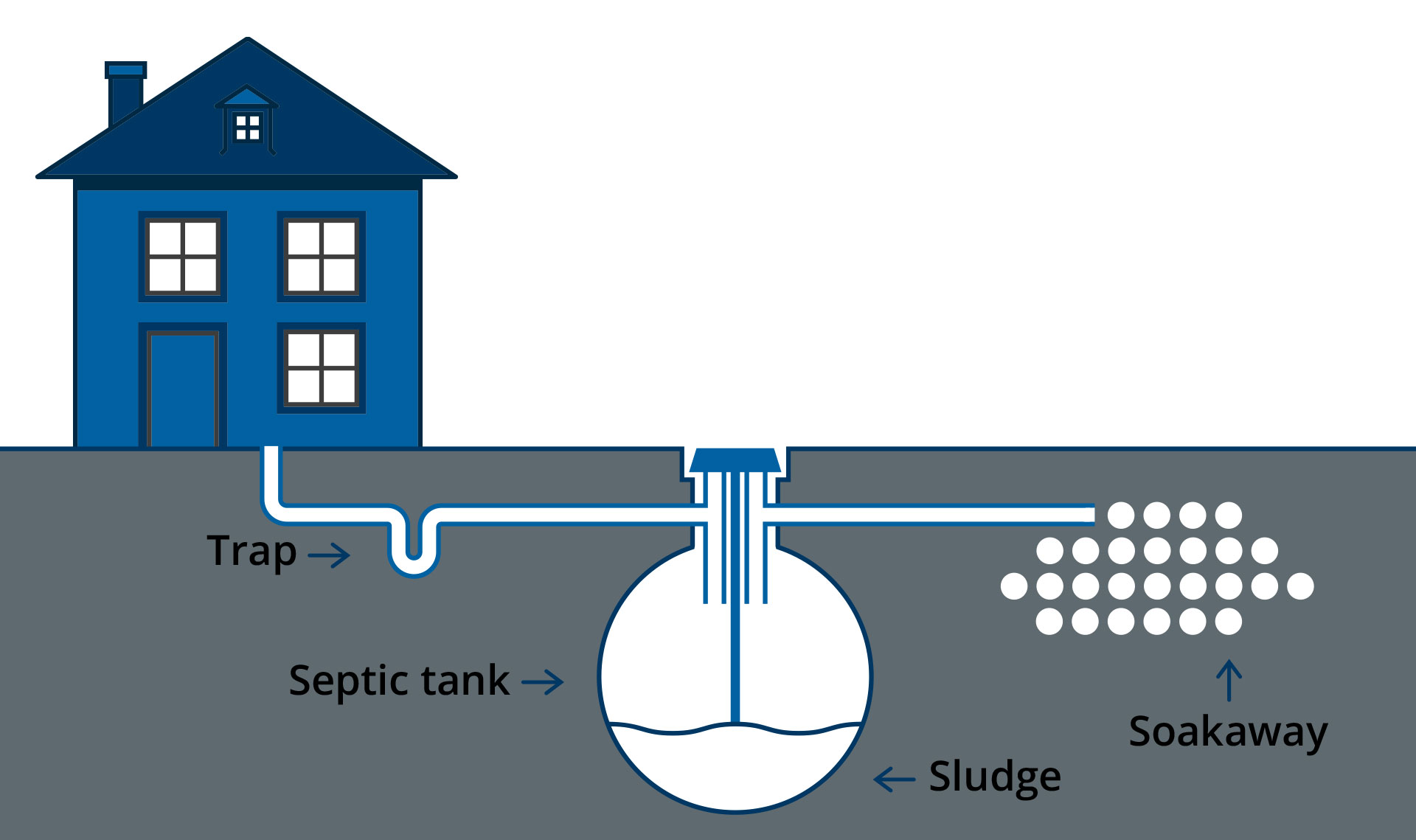Septic Tank & Cesspool / Cesspits
Drain Technology offer a call-out service or maintenance agreement depending on client requirements.
How Does a Septic Tank Work?
The purpose of a septic tank is to treat wastewater from your property, which is generally not connected to the public sewer system. It is usually either a large rectangular box made of brick, stone or concrete or a bottle-shaped plastic tank buried underground not far from the property it serves.
A septic tank works like a simple wastewater treatment works and the treated wastewater drains from the septic tank’s outlet pipe to a soakaway (shown in the diagram) or stream.
Waste material (sludge) is allowed to settle in the tank and is digested by natural bacteria breeding in the tank. Over time this sludge builds up on the bottom of the tank. This sludge has to be removed regularly to ensure that the tank continues to work properly and to prevent the soakaway from becoming choked.
How Often Does Your Tank Need to be De-sludged?
De-sludging should normally take place every twelve months. However, experience has shown that depending on the tank size and usage, plus the use of modern-day cleaning products that can kill the natural bacteria within the tank, this can reduce down to every six months.
If you know where the septic tank outlet drains to, check that the discharge is a light grey colour. If the liquid includes dark solid material or recognisable sewage solids, this shows that the septic tank needs de-sludging.
Do I have any responsibilities?
If you own or use a septic tank you are responsible for the quality of the discharge and its impact on the environment. You may be held accountable for any pollution caused by your septic tank.
You are also responsible for ensuring that:
- Your septic tank is properly maintained
- Your septic tank access lids are secure and in good working order. Any drains to and from the septic tank, including the soakaway, are free-flowing and free from blockages.
- If a septic tank isn’t maintained properly it can fail and cause flooding, foul odours, health risks and pollution of water supplies – such as nearby wells.
Cesspool/Cesspits
How often should I have my cesspit emptied?
We get asked this a lot! And it appears everyone seems to have a different opinion, ranging from a neighbour who thinks it never needs to be emptied as it’s self-cleaning, to a local drain contractor who will say every six months.
The frequency depends on a number of factors; the size of your property, the size of the tank, the number of occupants and general usage, such as the number of people bathing or showering every day.
We recommend following The Environment Agency’s guidelines to empty cesspits on an annual basis, this will prevent any offensive odours and blockages. We are flexible in our approach and if individuals require more frequent emptying we will help.
Traditional septic tank

Typical arrangement

Need help?
Contact Us
Need help?
